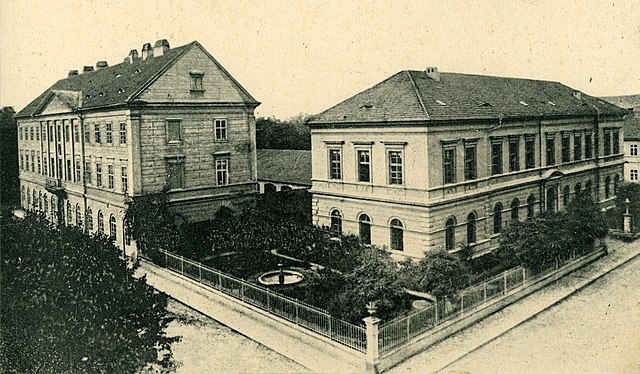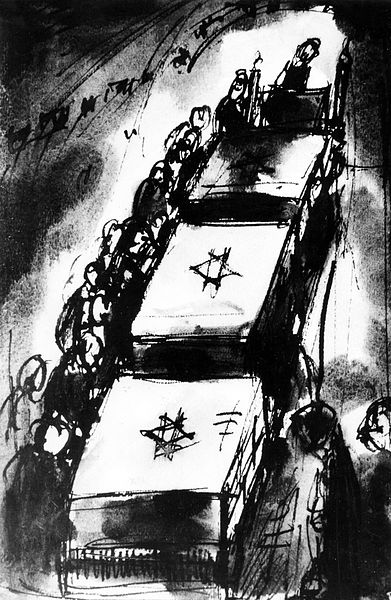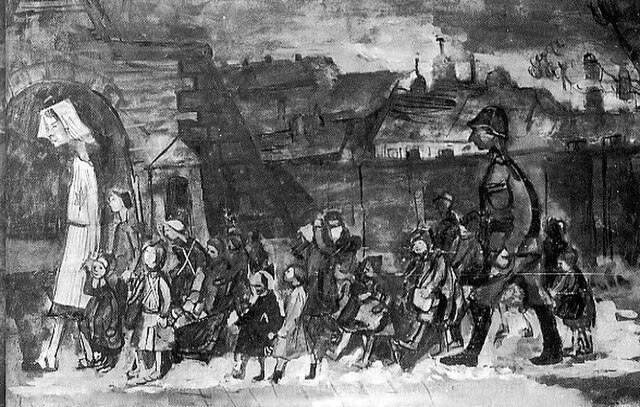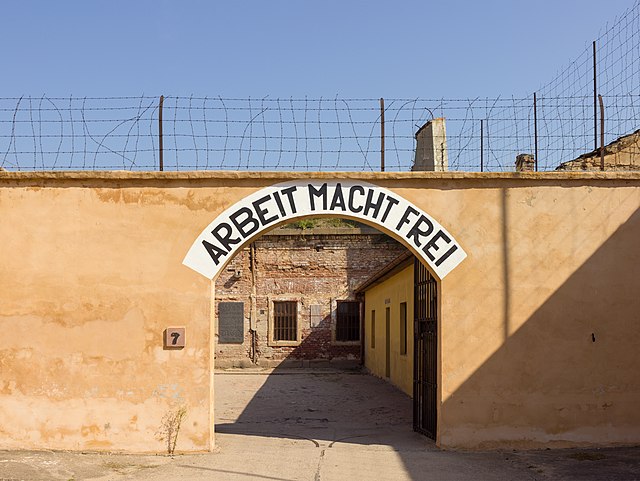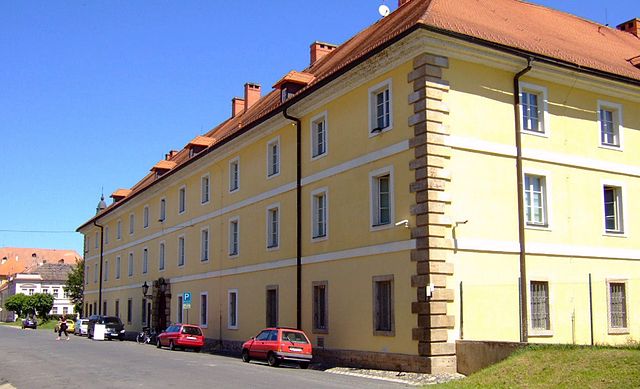Theresienstadt Ghetto was established by the SS during World War II in the fortress town of Terezín, in the Protectorate of Bohemia and Moravia. Theresienstadt served as a waystation to the extermination camps. Its conditions were deliberately engineered to hasten the death of its prisoners, and the ghetto also served a propaganda role. Unlike other ghettos, the exploitation of forced labor was not economically significant.
Bedřich Fritta's drawing of the barracks
Buildings in Theresienstadt, 1909 postcard
Theresienstadt prisoner Bedřich Fritta's drawing of a funeral
The Białystok children, drawn by Theresienstadt prisoner Otto Ungar
Terezín is a town in Litoměřice District in the Ústí nad Labem Region of the Czech Republic. It has about 2,800 inhabitants. It is a former military fortress composed of the citadel and adjacent walled garrison town. The town centre is well preserved and is protected by law as an urban monument reservation. Terezin is most infamously the location of the Nazis' notorious Theresienstadt Ghetto.
Town square with the Church of the Resurrection of Christ
Gate with the slogan Arbeit macht frei in the Small Fortress
Town hall on the town square
Former Magdeburg Barracks


